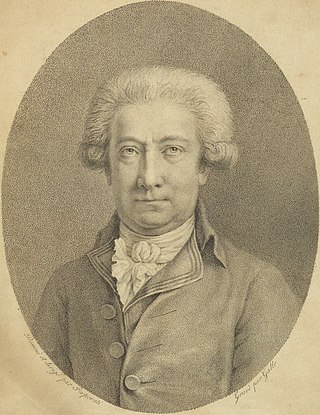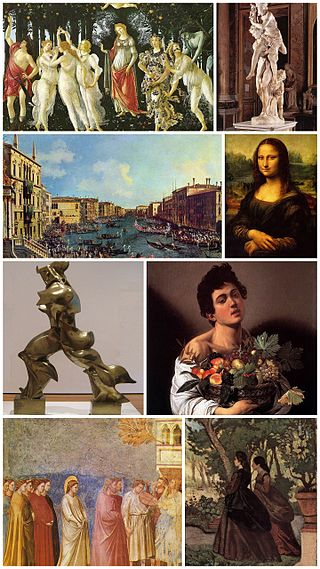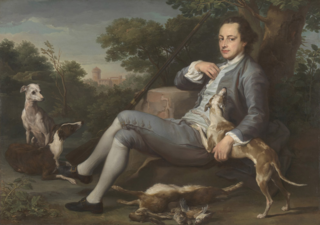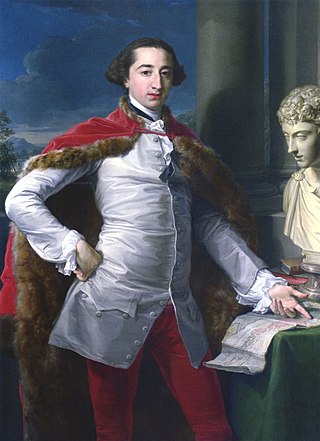
As a literary device or artistic form, an allegory is a narrative or visual representation in which a character, place, or event can be interpreted to represent a meaning with moral or political significance. Authors have used allegory throughout history in all forms of art to illustrate or convey complex ideas and concepts in ways that are comprehensible or striking to its viewers, readers, or listeners.

Pompeo Girolamo Batoni was an Italian painter who displayed a solid technical knowledge in his portrait work and in his numerous allegorical and mythological pictures. The high number of foreign visitors travelling throughout Italy and reaching Rome during their "Grand Tour" led the artist to specialize in portraits.

Sebastiano Conca was an Italian painter.

Venus, Cupid, Folly and Time is an allegorical painting of about 1545 by the Florentine painter Agnolo Bronzino. It is now in the National Gallery, London. Scholars do not know for certain what the painting depicts.

Asmus Jacob Carstens was a Danish-German painter, one of the most committed artists of German Neoclassicism. His career was erratic, partly because of his difficult personality, and the majority of his large projects were left incomplete, or subsequently destroyed. Much of what survives is in the form of drawings, many using "a schematic, pale colouring as a timid and humble accessory to the dominating figure-drawing", that were planned for large fresco commissions that never materialized.

The Ludovisi Ares is an Antonine Roman marble sculpture of Ares, a fine 2nd-century copy of a late 4th-century BCE Greek original, associated with Scopas or Lysippus: thus the Roman god of war receives his Greek name, Ares.

Carlo Antonio Porporati was an Italian engraver and painter.

In classical mythology, Cupid is the god of desire, erotic love, attraction and affection. He is often portrayed as the son of the love goddess Venus and the god of war Mars. He is also known as Amor. His Greek counterpart is Eros. Although Eros is generally portrayed as a slender winged youth in Classical Greek art, during the Hellenistic period, he was increasingly portrayed as a chubby boy. During this time, his iconography acquired the bow and arrow that represent his source of power: a person, or even a deity, who is shot by Cupid's arrow is filled with uncontrollable desire. In myths, Cupid is a minor character who serves mostly to set the plot in motion. He is a main character only in the tale of Cupid and Psyche, when wounded by his own weapons, he experiences the ordeal of love. Although other extended stories are not told about him, his tradition is rich in poetic themes and visual scenarios, such as "Love conquers all" and the retaliatory punishment or torture of Cupid.

Italian Rococo art refers to painting and the plastic arts in Italy during the Rococo period, which went from about the early/mid-18th to the late 18th century.

The marble Cupid and Psyche conserved in the Capitoline Museums, Rome, is a 1st or 2nd century Roman copy of a late Hellenistic period original. It was given to the nascent Capitoline Museums by Pope Benedict XIV in 1749, shortly after its discovery. Its graceful balance and sentimental appearance made it a favourite among the neoclassical generations of artists and visitors, and it was copied in many materials from bronze to biscuit porcelain. Antonio Canova consciously set out to outdo the Antique original with his own Cupid and Psyche of 1808

The Museum of King John III's Palace at Wilanów is a museum in Warsaw, Poland considered to be one of the oldest in the country and the repository of the country's royal and artistic heritage. The collection consists of valuables collected by subsequent owners of the Wilanów Palace, the Kings of Poland — John III Sobieski and Augustus II, as well as by representatives of noble families of Potocki, and Lubomirski and a collection of Sarmatian art.

John Rolle Walter was Tory MP for Exeter in 1754–1776 and for Devon in 1776–1779. He held the honorary position of Town Recorder of Great Torrington in 1739–1779, due to his family's long-standing importance as the major local landowner.

Humphry Morice was a Whig Member of Parliament for the Cornish parliamentary borough of Launceston from 2 February 1750 until 1780.

Portrait of Henry Peirse is an oil painting on canvas completed c. 1775 by the Italian painter Pompeo Batoni and housed in the Pinacoteca of the Gallerie Nazionali di Arte Antica in Rome.

Portrait of Humphry Morice is a 1761–62 oil-on-canvas painting by the Italian artist Pompeo Batoni showing the Englishman Humphry Morice. It is now in a private collection, although it is on display in the National Gallery, London. A signed 1762 autograph copy of the work entered the collection of Sir James and Lady Graham at Norton Conyers and is now on display at Basildon Park as part of National Trust collection.

Portrait of Richard Milles is a 1760s oil-on-canvas portrait painting by Pompeo Batoni, now in the National Gallery, London. Its subject is the English nobleman Richard Milles, who probably had it produced during a visit to Rome on his Grand Tour. He points to the Canton of Grisons in Switzerland on a map, with a bust of Marcus Aurelius in the background. Batoni also produced a miniature head of Milles, now in the Fitzwilliam Museum in Cambridge.

Sir Henry Fetherstonhaugh, 2nd Baronet, known as Harry, was an English aristocrat.
The Return of the Prodigal Son is a parable of Jesus in the Bible.

The Sacred Heart of Jesus is an oil painting by the Italian artist Pompeo Batoni, painted in 1767.

















